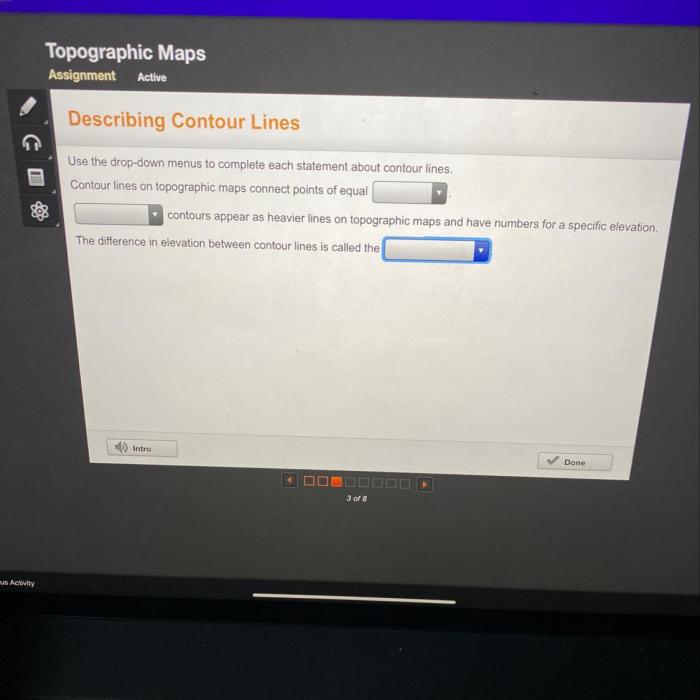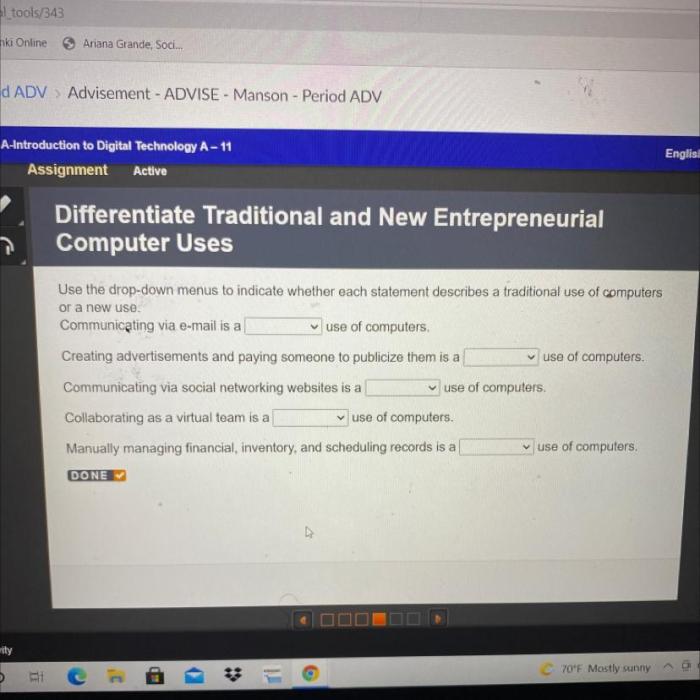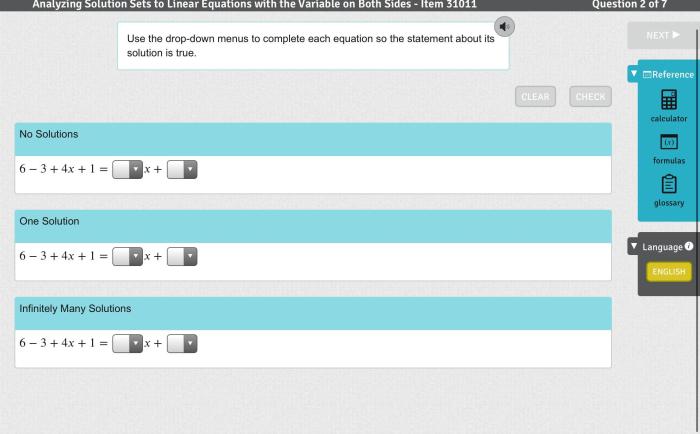Use the drop down menus to complete each statement – Drop-down menus are essential elements of web design, providing an efficient and intuitive way for users to access information. This guide delves into the world of drop-down menus, exploring their types, design considerations, user experience, implementation, and advanced techniques to empower web designers with the knowledge and skills to create user-friendly and visually appealing drop-down menus.
From understanding the purpose and common use cases of drop-down menus to mastering their implementation using HTML, CSS, and JavaScript, this guide covers every aspect of drop-down menu design and development.
Introduction
Drop-down menus are graphical user interface elements that provide a convenient way to organize and display hierarchical data in a compact space. They are commonly used in web design to present additional options or subcategories related to a main navigation item.
Types of Drop-Down Menus
Vertical Drop-Downs
Vertical drop-downs extend downwards from the main navigation item, creating a vertical list of options. They are suitable for situations where there are a limited number of subcategories or when the available space is constrained.
Advantages:
- Compact and space-efficient
- Easy to scan and navigate
Disadvantages:
- Can become cluttered with too many options
- May require scrolling if there are numerous subcategories
Horizontal Drop-Downs
Horizontal drop-downs extend horizontally from the main navigation item, creating a horizontal row of options. They are useful for presenting a wider range of subcategories or when the available space allows for a wider display.
Advantages:
- Provides more space for displaying options
- Can be easier to scan and navigate for certain layouts
Disadvantages:
- Can take up more vertical space
- May not be suitable for narrow layouts
Design Considerations

Visual Design
The visual design of drop-down menus is crucial for usability and aesthetics. Factors to consider include:
- Color:Choose colors that are visually appealing and contrast well with the background.
- Typography:Use clear and readable fonts that are appropriate for the context.
- Spacing:Ensure there is adequate spacing between menu items for easy readability.
Accessibility
Drop-down menus should be accessible to all users, including those with disabilities. Techniques to ensure accessibility include:
- Keyboard navigation:Allow users to navigate the menu using keyboard shortcuts.
- Screen reader support:Provide screen reader-friendly labels and descriptions.
- Contrast ratios:Meet WCAG guidelines for contrast ratios to ensure visibility for users with low vision.
User Experience

Usability
Usability is paramount for drop-down menus. Design principles to enhance usability include:
- Clear labeling:Use descriptive and concise labels for menu items.
- Hover states:Provide visual feedback on hover to indicate that an item is clickable.
- Response time:Ensure that drop-down menus open and close quickly and smoothly.
Navigation, Use the drop down menus to complete each statement
Drop-down menus play a vital role in website navigation. Best practices include:
- Logical organization:Group menu items logically to facilitate easy navigation.
- Hierarchical structure:Use submenus to create a hierarchical structure for complex menus.
- Consistent placement:Place drop-down menus in a consistent location throughout the website.
Implementation
HTML and CSS
Drop-down menus can be created using HTML and CSS. The following code example demonstrates a simple vertical drop-down menu:
“`html
“`
JavaScript
JavaScript can be used to enhance the functionality of drop-down menus. For example, the following code adds hover and click events to the menu:
“`javascriptconst menu = document.querySelector(‘ul’);const menuItems = menu.querySelectorAll(‘li’);menuItems.forEach((item) => item.addEventListener(‘mouseenter’, () => item.querySelector(‘ul’).style.display = ‘block’;);item.addEventListener(‘mouseleave’,
() => item.querySelector(‘ul’).style.display = ‘none’;););“`
Advanced Techniques: Use The Drop Down Menus To Complete Each Statement

Custom Styling
Advanced CSS techniques can be used to customize the appearance of drop-down menus. For example, the following code adds a custom shadow and rounded corners:
“`cssul ul box-shadow: 0 2px 4px rgba(0, 0, 0, 0.2);border-radius: 5px;“`
Accessibility Enhancements
Additional accessibility considerations for drop-down menus include:
- ARIA attributes:Use ARIA attributes to provide additional information for screen readers.
- Keyboard focus:Ensure that drop-down menus can be focused and navigated using the keyboard.
- Landmark roles:Use landmark roles to identify the drop-down menu as a navigation element.
Expert Answers
What are the main types of drop-down menus?
The two main types of drop-down menus are vertical drop-downs and horizontal drop-downs.
What are the key design considerations for drop-down menus?
Key design considerations include visual design, accessibility, usability, and navigation.
How can I implement drop-down menus using HTML and CSS?
To implement drop-down menus using HTML and CSS, you can use the <select> and <option> elements to create a basic drop-down menu, and then style it using CSS.